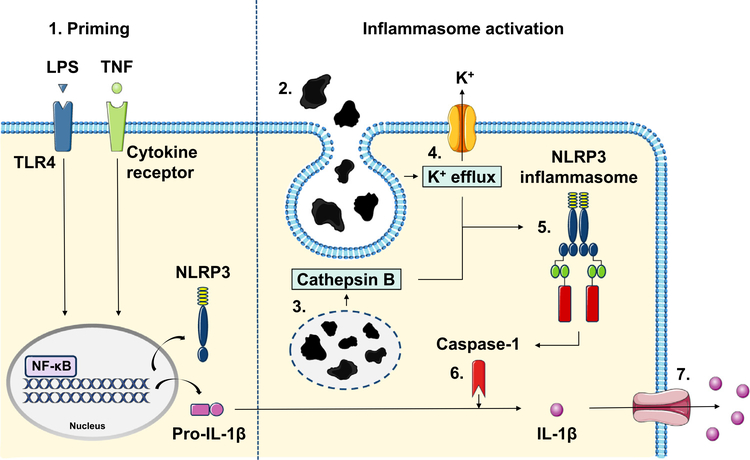Fig. 8.
Schematic view of the wear particle-induced inflammasome activation. 1. An NF-ĸB activating priming signal such as LPS or TNF is required to synthesize NLRP3 and pro-IL-1 β thus licensing macrophages for the NLRP3 inflammasome activation. 2. Recognition of foreign body particulate material results in particle phagocytosis and formation of phagolysosomes. Subsequent intracellular aberrations including 3. leakage of lysosomal protease cathepsin B and 4. outflow of potassium () are sensed by the NLRP3 receptor. 5. Upon activation, NLRP3 triggers the assembly of the inflammasome complex by recruiting specific adaptor proteins. 6. NLRP3 inflammasome eventually generates active caspase-1, which cleaves precursor protein pro-IL-1 β into the secreted form. 7. Mature IL-1 β is released from the cell through membrane pores formed after the inflammasome activation.

